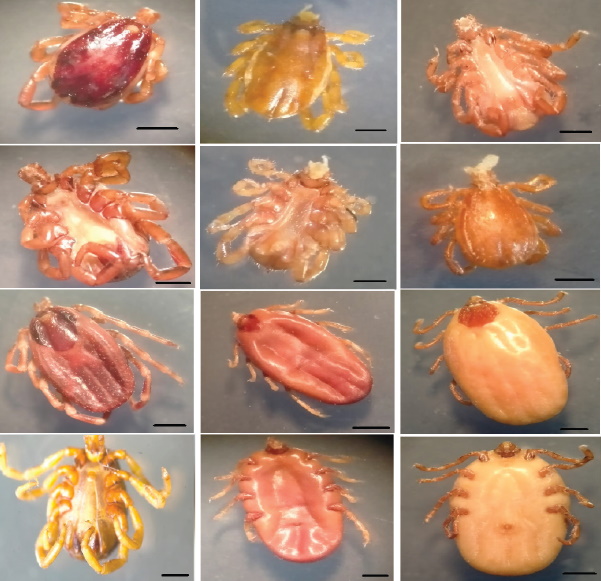Evaluation of the hematological response to various therapeutic approaches in the management of open wounds: An experimental study in rodents
DOI:
https://doi.org/10.51607/22331360.2025.74.S2.28Keywords:
Chlorine dioxide, experimental wound, gentamicin, Manuka honey, poikilocytosisAbstract
Hematological analyses are important in veterinary and human
medicine for early detection of homeostatic changes and
assessment of systemic responses to injury, stress, and therapy.
In this study, the hematological response of Wistar rats with
surgically induced wounds was analyzed following treatment
with natural and synthetic therapeutic agents.
Twenty-four healthy adult Wistar rats were randomized into six
groups (n = 4): surgical control (C), gentamicin ointment (AB),
Manuka honey MGO 250+ (MH1), Manuka honey MGO 550+
(MH2), chlorine dioxide (CL), and absolute control without
incision and therapy (CC). After a standardized abdominal
incision (except CC), treatments were applied twice daily for 7
days. On day 7, hematological parameters and peripheral blood
smears were analyzed.
Significant intergroup differences were found in WBC (p =
0.030), lymphocytes (p = 0.020), RBC (p = 0.002), MCV and
MCH (p < 0.001), RDW-CV and RDW-SD (p < 0.001). Elevated
estimated marginal means were most consistent in MH1, MH2,
and CC, particularly for WBC, lymphocytes, RBC, and red cell
indices, suggesting a more pronounced hematological response.
Poikilocytosis was present in all groups, with annulocytes most
prevalent (up to 6.01% in MH1), followed by dacryocytes and
ovalocytes. The leukogram showed lymphocyte dominance in
all groups, with the highest percentage in MH1 (65.75%), and
the highest neutrophil percentage in AB (47.75%).
This study provides insight into potential differences in
the hematological response to natural and synthetic wound
treatments in an animal model, and serves as a basis for further
research into the biological safety and efficacy of the therapies
used.

Downloads
Published
How to Cite
Issue
Section
License
Copyright (c) 2025 Nadža Kapo-Dolan, Nejira Kapo, Nedim Čović, Ajla Ališah, Muhamed Katica

This work is licensed under a Creative Commons Attribution 4.0 International License.







